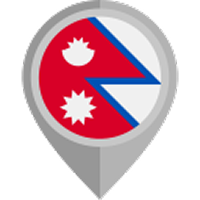Nepal vision | 12/02/2024
So, you have a dream to be a part of the unforgettable journey to the iconic Everest Base Camp trek. However, there is a question if beginners can do the Everest base camp.
Everest Base Camp is located in the heart of the Himalayas, which captures the hearts of adventurers worldwide.
Everest base camp is a lifetime opportunity to witness the beauty and allure of the majestic Himalayan. Beginners may feel uncertain about the journey.
With the right preparation, this trek becomes an achievable and awe-inspiring experience, majestic the beauty of Nepal's mountains.
Without any further ado, let us know if a beginner can start on the Everest base camp.

Highlights of the Everest Base Camp
The Everest Base Camp trek is packed with amazing moments that make it an unforgettable experience. One big highlight is the jaw-dropping view of Mount Everest, the tallest mountain on Earth, along with other stunning peaks like Lhotse and Ama Dablam.
You trek through Sherpa villages and pass by monasteries and colourful prayer flags that add a special touch.
Nature lovers will appreciate the diverse landscapes – from lush forests to high-altitude terrain, all inside the beautiful Sagarmatha National Park, a UNESCO World Heritage Site.
But it's not just about the scenery; meeting the friendly Sherpa people and staying in local teahouses make the journey even more special.
Reaching Everest Base Camp is a major achievement, and standing there, right at the bottom of Everest, is truly amazing. Climbing Kala Patthar for an even better view is a bonus.

Itinerary of the Everest Base Camp for beginners by Nepal Vision Treks
Our team of professional trekkers is here to help the beginner to make their Everest base camp trek efficient and exciting. Let us break down the itinerary suitable for beginners
:
Day 1: Arrival in Kathmandu (1,300m/4,264 ft)
- Arrive in Kathmandu and settle into your accommodation.
Day 2: Fly to Lukla (2,840m/9,138ft) & trek to Phakding (2,610m/8,562ft)
- Take a scenic flight to Lukla and start your trek to Phakding. (3-4 hrs walk)
Day 3: Trek from Phakding to Namche Bazaar (3,440m/11,286ft)
- Trek to Namche Bazaar, a lively Sherpa town. (5-6 hrs walk)
Day 4: Acclimatization day at Namche Bazaar
- Rest and acclimatize at Namche Bazaar.
Day 5: Hike from Namche to Tyangboche (3,860m/12,664ft)
- Enjoy a hike to Tyangboche with stunning mountain views. (5-6 hrs walk)
Day 6: Trek to Dingboche (4,410m/14,469 ft)
- Continue the trek to Dingboche. (5-6 hrs walk)
Day 7: Acclimatization day at Dingboche
- Take a day to acclimatize at Dingboche.
Day 8: Trek Dingboche to Lobuche (4,940m/16,207ft)
- Trek to Lobuche through picturesque landscapes. (5-6 hrs walk)
Day 9: Trek to Gorakshep (5,164m/16,942ft) & hike to Everest Base Camp
- Reach Gorakshep and embark on a hike to Everest Base Camp. (5-6 hrs walk)
Day 10: Early Hike to Kala Patthar(5,550m/18,208ft) & trek back to Pheriche
- Early morning hike to Kala Patthar and trek back to Pheriche. (6-7 hrs walk)
Day 11: Trek back from Pheriche to Namche
- Trek back to Namche Bazaar. (6-7 hrs walk)
Day 12: Trek Namche to Lukla (2,840m/9,138ft)
- Trek back to Lukla, marking the end of your trek. (6-7 hrs walk)
Day 13: Fly back to Kathmandu
- Take a scenic flight back to Kathmandu.
Day 14: Departure from Kathmandu
- Depart from Kathmandu, concluding your Everest Base Camp adventure.

Tips for Beginners to Follow For Everest Base Camp trek
Trekking to Everest Base Camp as a beginner is an exciting journey. It offers stunning views and a great sense of accomplishment. To make sure you have a safe and enjoyable adventure, it's crucial to be well-prepared.
Stay with us to know these simple and essential tips for first-time trekkers. It covers everything from permits and acclimatization to gear and cultural considerations.
Permit Requirement
Before starting your Everest Base Camp trek, make sure you have the right permits: the Sagarmatha National Park Permit and the Khumbu Pasang Lhamu Rural Municipality Permit.
Sagarmatha National Park Permit
This permit is necessary to enter the national park where Everest Base Camp is located. Get it in Kathmandu through your trekking agency before your trek. It helps protect the environment and is crucial for your journey.
Khumbu Pasang Lhamu Rural Municipality Permit
This permit is specific to the Khumbu region and keeps track of trekkers in the local areas. You can get it in Kathmandu or at entry points in the Khumbu region. Check for any updates on requirements and fees before your trek.
Make sure all your paperwork is in order, and keep these permits accessible during your trek, as they will be checked at different points.
Accommodations
You should appreciate and immerse in the simplicity of teahouse accommodations during your Everest Base Camp trek.
While these lodgings may not offer luxury, appreciate the warmth and hospitality they provide. These teahouses are an integral part of the trekking experience. It offers a cozy and communal atmosphere between the stunning Himalayan landscapes.
Food
Be mindful of your dietary choices throughout the trek. Consume locally available foods to support the communities along the route and stay hydrated.
Carrying some snacks for energy is advisable during the trek. It ensures you maintain your stamina for the challenging yet rewarding journey.
Communication
Recognize that communication facilities are limited along the trek. Don't heavily rely on the internet and mobile services.
You should dive into the opportunity to disconnect from the digital world and fully immerse yourself in the natural beauty surrounding you.
Group Safety
Prioritize group safety during the trek. Stick together, look out for one another, and follow safety guidelines.
Group dynamics enhance the overall experience and provide an added layer of security.
Enhance Your Trekking Experience
Immerse yourself in the local culture. Interact with Sherpa communities, visit monasteries, and participate in cultural experiences along the way.
Enriching your trekking experience goes beyond the physical journey.
Travel Insurance
Obtain comprehensive travel insurance before starting your trek. This is a must for all trekkers, covering medical emergencies, evacuation costs, and unforeseen events. Ensure your policy includes coverage for high-altitude trekking.

How can a beginner prepare for the Everest Base Camp trek?
The Everest Base Camp trek can be challenging for beginners due to its high altitude and varying terrains. The trek involves long hours of walking, steep ascents, and potentially unpredictable weather conditions.
However, with proper preparation, guidance, and a gradual approach, beginners can complete the trek and enjoy the breathtaking landscapes.
Physical Training Program
Start a physical training program at least a few months before the trek. Focus on cardiovascular exercises like walking, hiking, and jogging to build stamina. Incorporate strength training for leg muscles to handle the uphill climbs.
Cardiovascular Exercises:
Engage in regular cardio exercises such as walking, hiking, jogging, or cycling. This builds endurance and prepares your body for sustained physical activity.
Strength Training:
Strengthen leg muscles with exercises like squats, lunges, and calf raises. Improved leg strength is essential for the steep ascents and descents during the trek.
Hiking Practice:
Practice hiking with a loaded backpack to simulate the conditions of the trek. This helps your body adjust to carrying weight over an extended period.

Acclimatization
Acclimatization is crucial, especially at higher altitudes. Plan your itinerary with gradual ascents, including rest days for acclimatization. Spend additional days at higher elevations to allow your body to adjust and reduce the risk of altitude sickness.
Gradual Ascent
Plan an itinerary with gradual altitude gains. Avoid rapid ascents to reduce the risk of altitude sickness. Adequate acclimatization is key for a successful and enjoyable trek.
Rest Days
Incorporate rest days at higher altitudes. Use these days for light activities, allowing your body to acclimatize while minimizing physical strain.
Stay Hydrated
Drink plenty of water to aid acclimatization. Proper hydration supports your body's adjustment to higher altitudes.
Mental Training Program
Develop a positive and determined mindset. Mental resilience is vital for tackling challenges during the trek. Visualize success, break the trek into manageable sections, and focus on the joy of the journey.
Positive Visualization
Visualize successful trekking experiences. Imagine reaching Everest Base Camp and focus on the joy and accomplishment of each step.
Break the Trek Into Sections
Divide the trek into smaller sections to make it more manageable. Set achievable goals for each day, building confidence as you progress.
Mindfulness and Relaxation Techniques
Practice mindfulness and relaxation techniques to manage stress and anxiety. These techniques help you stay focused and enjoy the journey.
To wrap up, The Everest Base Camp trek as a beginner is a challenging but incredibly fulfilling adventure. A gradual training routine, acclimatization, and a positive mindset are your partner to make your trek better.
The logistics, like permits and accommodations, and choosing a good trekking company like Nepal Vision Trek are essential. Teahouse stays, local food and limited communication facilities offer a cultural touch to the journey.
In the end, while the trek may have its tough moments, the breathtaking views and unique experiences make it all worthwhile. With determination and the right approach, beginners can turn this trek into a remarkable achievement.

FAQS
1) Is the Everest Base Camp trek suitable for beginners?
Yes, with proper preparation, beginners can complete the trek.
2) What permits are required for the Everest Base Camp trek?
You need the Sagarmatha National Park Permit and the Khumbu Pasang Lhamu Rural Municipality Permit.
3) How long does the Everest Base Camp trek take?
The standard trek takes around 12 to 14 days, allowing for acclimatization and rest days.
4) What is the best time to trek to Everest Base Camp?
Spring (March to May) and Autumn (September to November) offer the most stable weather conditions.
5) Are there accommodations on the trek, and how basic are they?
Teahouse accommodations are available, offering a simple and cozy stay with basic facilities.
6) Is it necessary to hire a guide or porter for the trek?
While not mandatory, hiring a guide or porter can significantly ease the trek for beginners.
7) What is the risk of altitude sickness, and how can it be mitigated?
Altitude sickness is a concern, but gradual acclimatization, hydration, and rest days help reduce the risk.
8) Can I trek to Everest Base Camp independently, or should I join a group?
Both options are possible, but joining a group provides safety, camaraderie, and logistical support.
9) What kind of food is available during the trek, and are there vegetarian options?
Teahouses offer a variety of meals, including vegetarian options like dal bhat and noodles.
10) is travel insurance necessary for the Everest Base Camp trek?
Yes, comprehensive travel insurance covering high-altitude trekking is essential for unforeseen circumstances and emergencies.










